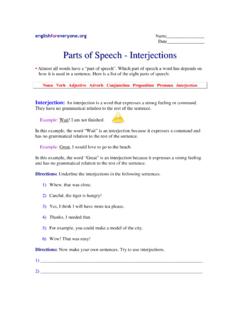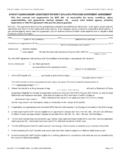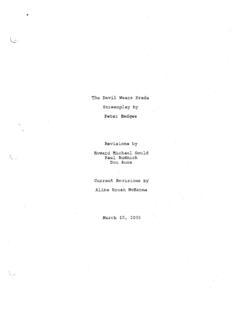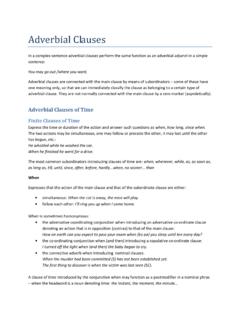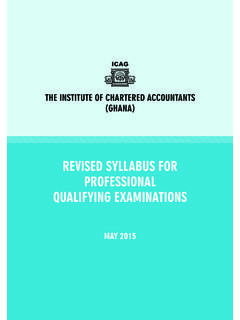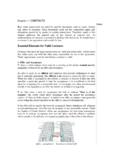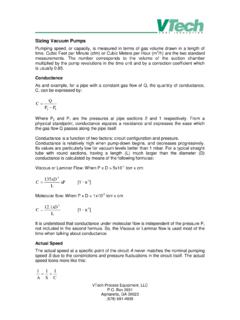Transcription of Pre-K Scope and Sequence - BridgePoint Academy
1 Pre-K Scope and Sequence LITERACY AND LANGUAGE DEVELOPMENT. Theme Theme Phonological Awareness 1 2 3 4 5 6 7 8 9 10 1 2 3 4 5 6 7 8 9 10. Becomes familiar with nursery rhymes and rhyming songs Recognizes story structure: Plot . Identifies spoken words as same or different Recognizes main idea . Identifies oral rhymes Predicts outcomes . Blends, segments, claps syllables Uses props to convey meaning . Produces oral rhymes Follows directions . Listens for beginning sound Retells story in Sequence . Matches/produces words with same beginning sound Identifies recurring themes across works . Isolates beginning sound Identifies rhyme, rhythm, and repetition in poems . Blends onset and rime Identifies, retells important facts from an Blends two phonemes informational text . Transition to Kindergarten Segments onset and rime Oral Language and Vocabulary Blends three phonemes Uses newly learned vocabulary on multiple occasions and in new contexts . Substitutes initial sound.
2 Identifies a wide variety of objects through Isolates ending sound receptive language . Segments phonemes Names, describes actual or pictured objects . Shows a steady increase in listening and Comprehension speaking vocabulary . Makes and confirms predictions Derives meaning from non-verbal and verbal cues . Makes connections using illustrations/photos, Identifies the source of environmental sounds . prior knowledge, real-life experiences . Expresses familiar routines, tells simple personal Notes details narratives or memories . Makes inferences Identifies the meaning of content-specific vocabulary . Draws conclusions Interprets illustrations, simple charts, webs . Identifies Sequence of events Uses position words . Recognizes story structure: Characters, setting Uses sensory words . Compares and contrasts Uses temporal words . Distinguishes between fiction and nonfiction Follows directions . Determines cause and effect Begins to understand simple multiple-meaning words, Categorizes and classifies homonyms, synonyms, antonyms.
3 Recognizes story structure: Beginning, middle, and end Begins to understand naming words, action words, Distinguishes between fantasy and realism describing words . Scope and Sequence S1. Theme Theme 1 2 3 4 5 6 7 8 9 10 Letter and Word Knowledge 1 2 3 4 5 6 7 8 9 10. Speaks in complete sentences with subject/verb Knows order of the alphabet and recites in Sequence . agreement Focuses on letter names and shapes . Experiments with using more complex grammar and Recognizes own written name in a variety of contexts, parts of speech capital and lowercase letters . Speaks in large/small groups, formal/informal settings Begins to notice the beginning letters in familiar words . Listens to and engages in sustained conversation Is introduced to letter sounds . (five or more exchanges) . Identifies 10 or more printed alphabet letters by name, in random order . Book/Print Awareness Matches some letters with their sound . Makes connections between oral language and print Correctly produces the most common sound for Shows where reading begins on a page 5 8 letters.
4 Demonstrates directionality in print Selects letters to stand for sounds Distinguishes between print and illustrations (8 10 correct letter-sound associations) . Recognizes print forms in the environment Identifies all 26 alphabet letters (capital and lowercase). Develops understanding of different functions of print by name, in random order . Distinguishes letters from numbers Recognizes some frequently seen words . Identifies role of author and illustrator . Writing, Written Expression Recognizes print features of informational texts . Recognizes graphic aids of informational texts Experiments daily with a variety of writing surfaces and materials . Identifies use of informational text . Dictates words, phrases, ideas, experiences, Identifies and explains how the title contributes story events, sentences . to meaning . Uses pictures, signs, symbols to represent oral language, Demonstrates the proper use and care of books ideas, stories . Points out front cover and first, middle, and end Uses scribbles to represent language.
5 Pages of a book . Experiments with basic writing conventions . Understands that letters form words . Writes independently and without resistance . Understands that words are separated by spaces . Writes own name using initial capital and Counts words in a sentence lowercase letters . Recognizes favorite books by the covers Generates content and topics for writing . Contributes to a shared writing . Motivation to Read Writes five or more recognizable upper- or lowercase Listens to and discusses literary multicultural texts, letters or numbers . songs, and oral stories Writes for specific and varied purposes . Shows growing interest and involvement in a variety of books and poetry Fluency Chooses to look at books independently, sees self Listens daily to fluent and expressive formal and as reader . informal texts . Independently engages in reading behaviors . Progresses in clarity of pronunciation . Speaks with appropriate volume, intensity, and tone . Recites with expression and rhythm.
6 S2 Scope and Sequence MATH. Theme Theme Geometry and Spatial Sense 1 2 3 4 5 6 7 8 9 10 Classification and Data Collection 1 2 3 4 5 6 7 8 9 10. Recognizes, names, describes, compares, combines Compares and contrasts objects . shapes and solids Sorts objects and explains how the sorting was done . Understands and describes position, direction, distance Uses charts and graphs . Demonstrates an awareness of symmetry . Builds understanding of size as related to space Numbers and Operations Makes connections between 2-D and 3-D forms Counts by ones to ten or higher (by rote) . Constructs and sorts solid shapes and forms Compares numbers of objects using language . Uses one-to-one correspondence to arrange and Patterns compare sets . Reproduces patterns of sound and physical movement Counts and builds sets of one to five objects . Reproduces simple patterns of concrete objects Counts concrete objects to five or higher . Predicts what comes next to extend a pattern Understands that numbers always represent the same Creates simple repeating patterns quantity.
7 Identifies first, middle, and last in a series . Time Concepts Uses ordinal numbers from first to fifth . Uses language associated with time in everyday Recognizes numerals 1 through 5 . situations Recognizes and describes the concept of zero . Begins to categorize time intervals Matches a numeral to a set of 1 to 5 . Uses and compares temporal terms Recognizes numerals through 10 . Explores the concept of whole, parts, and parts that Measurement make a whole . Explores the use and meaning of currency and coins Uses numbers to predict, estimate, and make realistic Examines, manipulates, and identifies familiar coins guesses . Measures length of objects Combines and separates sets of objects to create Explores the concept of capacity a new set . Explores the weight and mass of objects Names how many are in a group of up to three objects without counting . Explores using standard and non-standard measures for length, area, weight Recognizes numbers in the environment.
8 Estimates length, size, distance, time . Problem Solving Compares size, length, capacity, weight in natural situations Explores and solves a simple, orally presented problem . Names standard tools for measuring time, temperature, Identifies the question in the problem . length, capacity, weight Decides if enough information is present to solve the problem . Makes a step-by-step plan to solve a problem . Selects and applies a strategy . Identifies alternative ways to solve a problem . Scope and Sequence S3. Theme Theme Reasoning 1 2 3 4 5 6 7 8 9 10 1 2 3 4 5 6 7 8 9 10. Uses and explains/supports reasoning Describes how sun affects temperature of land, air, Makes, tests generalizations and water . Supports or refutes mathematical statements or Explores concepts about air . solutions Considers the impact of seasons on people and animals . Observes and describes various ways that objects move . Communication Identifies and describes the change in direction Uses multiple representations to express concepts of an object.
9 Or solutions Identifies sounds made by objects . Expresses mathematical ideas orally and with Explores what things are made of . concrete materials Observes and explores how materials change, react, and interact when combined . Observes, explores, and manipulates simple machines . SCIENCE Manipulates, observes, compares weight and motion of concrete objects . Science Processes Investigates states of matter (solids and liquids) . Recognizes that everyone can do science and Compares pictures, photographs, and models to real invent things people, places, and things . Observes, describes, and uses safe tools and procedures . Asks questions about and investigates objects, events, and organisms SOCIAL STUDIES. Uses senses to investigate objects, events, organisms . Describes observations and records events Individual, Culture, and Community Recognizes, identifies, and describes changes in his/her Recognizes qualities, interests, skills, traditions, environment experiences that make people unique.
10 Compares and contrasts data Investigates ways that people form a community . Sorts objects and organisms into groups and describes Identifies similarities and differences among people . organization . Demonstrates positive human attributes, relationships, roles, and social skills . Science Concepts Describes different ways that people live, work, and play . Describes how offspring are like their parents . Describes sequences and patterns found in nature History Identifies animals and plants as living things Begins to understand family history and relationships . Recognizes that living things have similar needs Begins to categorize time intervals . for water, food, and air . Identifies ways people's communities and everyday lives Expands knowledge and respect for own body have changed . and the environment . Begins to measure calendar time by days, weeks, Applies understanding of life cycles to plants months, and years . and animals . Recalls and explains Sequence of events.

